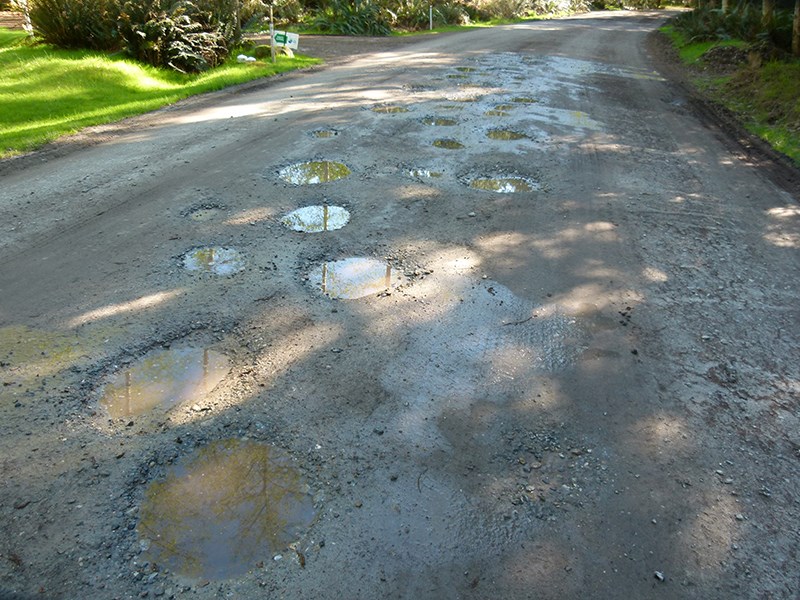Residents of Savary Island and the provincial government have reached an agreement on enforceable, lower speed limits for the island’s roads: there won’t be any.
However, signs asking drivers to slow down will be posted along the island’s winding, narrow, potholed gravel roads.
“If enforceable limits are not possible, then signs are the next best thing,” said Bud Graham, president of Association of the Savary Island Committee (ASIC). “The signs are more of a moral suasion argument to get people to be a little more cognizant of their speed.”
The courtesy signs, which the BC Ministry of Transportation and Infrastructure (MOTI) is developing with staff from Powell River Regional District and ASIC, will encourage drivers to be aware of conditions and to keep to a 30-kilometre per hour limit.
“You clearly cannot do 80 kilometres per hour on Savary roads, but there are a number of people who drive too fast,” said Graham. “Our objective was to get that number down to something a little more realistic.”
Graham added that the committee was not advocating for roads to be paved, just better maintained and a lower speed limit established.
“As it turns out, we’re not going to get enforceable signage, but this is the next best step to improve driver awareness, hopefully reflected in their behaviour,” he said.
According to an ASIC public information bulletin, the group hopes to have the signs in place before the busy 2016 summer season starts.
Last November, the committee sent BC transportation minister Todd Stone a letter asking for assistance with the matter.
MOTI recognizes the resident’s concerns, but could not set lower, enforceable limits because of the default limit of all provincial roads, unless otherwise posted, said ministry public affairs officer Kate Mukasa.
“Consultations continue with the local community,” said Mukasa. “Once all parties agree on the applicable signs, the ministry will install the signs on Savary Island roadways.”
ASIC directors Bryan Miles, Rick McLean and Graham met with ministry senior traffic operations engineer Graeme Cross in March to discuss residents’ concerns about the current island-wide 80 km/h limit.
The committee is worried that as the number of people and traffic increases, so does the potential for accidents. More than half of the island’s 1,700 properties have seen development during the past 15 to 20 years and more residents are staying on-island for long periods of the year, said Graham.
During a PRRD-sponsored traffic count at Wharf Hill last summer, over 500 vehicles were recorded in one day.
ASIC is working with the ministry to have the road reclassified, which would mean higher levels of maintenance and increased safety, said Graham, but he added it may take until the current maintenance contract is renegotiated in 2018 for that to occur.



